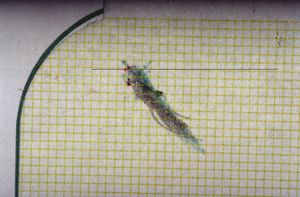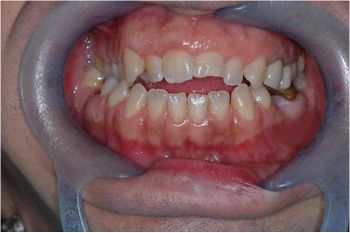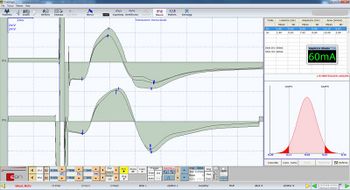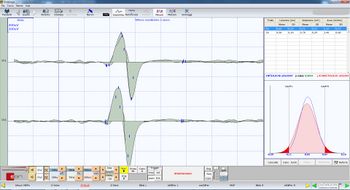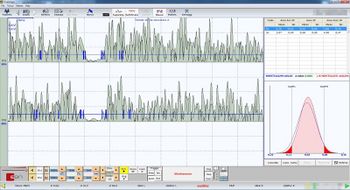'The logic of the classical language'
'The logic of the classical language'
Abstract
Masticationpedia embarks on a comprehensive exploration into the transformative shift from traditional clinical communication to the incorporation of sophisticated computational logic within the medical field, particularly highlighting its implications in craniofacial biology. The narrative underscores the pivotal transition towards leveraging encrypted machine languages and state-of-the-art technologies, such as gene sequencing and advanced imaging techniques, to substantially enhance diagnostic accuracy and the effectiveness of treatments.
Central to the document is the profound impact of epigenetics and phenomics in the medical domain, offering a groundbreaking perspective on how these sciences contribute to a more nuanced understanding of craniofacial anomalies. By delving into the complex interplay between genetic factors, environmental influences, and technological advancements, the text reveals the potential for pioneering personalized medical approaches that cater specifically to the unique genetic and epigenetic makeup of individuals.
The discourse extends into the realm of classical logic, elucidating its application in medical diagnostics through the utilization of logical operators, quantifiers, and the foundational principle of excluded middle. This methodological approach facilitates the formulation of precise diagnostic conclusions and the development of targeted treatment plans, particularly for conditions that manifest in the intricately complex craniofacial region.
Furthermore, the document passionately advocates for an interdisciplinary approach in tackling medical challenges, emphasizing the indispensable value of integrating insights from various scientific disciplines. This collaborative stance is posited as essential for advancing the frontier of patient care, especially in addressing the multifaceted challenges presented by craniofacial disorders.
Reflecting on future directions, the narrative calls for the adoption of a more flexible and dynamic logical language in the medical field, one that is capable of adapting to the intricacies and nuances inherent in clinical practice. This envisaged future emphasizes the importance of remaining open and responsive to the evolving landscape of scientific research, ensuring that medical practices continue to advance in line with cutting-edge discoveries.
In conclusion, "The Logic of the Classical Language - Masticationpedia" presents a compelling vision of a future where the fusion of computational logic, advanced technology, and medical science heralds a new era of diagnostics and patient care. It champions a paradigm where medical language, enriched by the relentless progression of scientific knowledge, leads to unparalleled precision in diagnostics and a more effective, personalized approach to treatment, setting a new standard in patient care, particularly within the specialized field of craniofacial biology.
Introduction
In the previous chapter, dedicated to the "Logic of Medical Language", we aimed to shift the focus from symptoms or clinical signs to an encrypted machine language. In this context, the arguments of Donald E. Stanley, Daniel G. Campos, and Pat Croskerry are particularly pertinent, especially when connected to the concept of time as an information vector (anticipating the symptom) and to the consideration of the message as a machine language rather than a verbal language). [1][2]
However, this does not lessen the importance of the clinical history, established on a pseudo-formal verbal language, which has now firmly entrenched itself in clinical practice and has proven its diagnostic effectiveness. Our aim in emphasizing a machine language and the system is merely to provide an additional opportunity to validate Medical-Diagnostic Science. We are fully aware that our "Linux Sapiens" remains puzzled by what has been anticipated and continues to ponder.
(A bit of patience, please)
We cannot limit ourselves to providing a conventional answer, as science progresses not through baseless assertions but through questions and reflections that have passed the scrutiny of scientific validation. This compels us to explore and give voice to thoughts, perplexities, and doubts raised by certain key concepts discussed in various scientific articles.
Among these critical topics is "Craniofacial Biology".
We begin with an influential study by Townsend and Brook, [3] in which the authors challenge the current research paradigm, both theoretical and applied, in "Craniofacial Biology", aiming to derive clinical considerations and implications. One aspect they address is the "Interdisciplinary Approach", through which Geoffrey Sperber and his son Steven recognized the potential for exponential growth in the field of "Craniofacial Biology" due to technological innovations such as gene sequencing, CT scans, MRI imaging, laser scanning, image analysis, ultrasound, and spectroscopy. [4]
Another topic of significant interest within 'Craniofacial Biology' is the recognition that biological systems are considered 'Complex Systems'. [5] 'Epigenetics' also plays a fundamental role in craniofacial molecular biology. Researchers from Adelaide and Sydney have provided an in-depth critique in the field of epigenetics, with a particular focus on dental and craniofacial disciplines. [6] Phenomics, in particular, explored by these authors (see Phenomics), is a research area dedicated to measuring changes in teeth and associated orofacial structures resulting from interactions between genetic, epigenetic, and environmental factors during development. [7] In this context, it is crucial to mention the work of Irma Thesleff from Helsinki, Finland, who highlighted the existence of numerous transient signaling centers in the dental epithelium that play key roles in the tooth development program. [8]
Additionally, the works by Peterkova R., Hovorakova M., Peterka M., and Lesot H., offer a fascinating overview of the processes involved in dental development. [9][10][11] For completeness, the studies by Han J., Menicanin D., Gronthos S., and Bartold P.M., which have explored a wide range of research on stem cells, tissue engineering, and periodontal regeneration, cannot be omitted. [12]
This review necessarily included discussions on genetic, epigenetic, and environmental influences that, during morphogenesis, lead to variations in the number, size, and shape of teeth, [13][14] as well as on the effect of tongue pressure on growth and craniofacial functions. [15][16] Furthermore, special mention is deserved for the exceptional work of Townsend and Brook, whose content aligns well with the reflections of another prominent author, HC Slavkin. Slavkin [17]asserts:
The future holds countless opportunities to significantly improve the clinical outcomes of both congenital and acquired craniofacial malformations. Clinicians play a crucial role, as critical thinking combined with clinical experience greatly enhances diagnostic accuracy, and consequently, health outcomes.
(Let me give you a practical example)
In the "Introduction", we raised some issues related to malocclusion. In this context, we examine the logic of the medical language used by the dentist when faced with the clinical case described in the "Introductory Chapter", including diagnostic and therapeutic conclusions.
The patient has a unilateral posterior crossbite and an anterior open bite. [18]The crossbite represents a deviation from normal occlusion [19] and is therefore treated concurrently with the open bite. [20][21] This reasoning suggests that the model (masticatory system) is 'normalized to occlusion'; inversely interpreted, it implies that an occlusal discrepancy is a cause of malocclusion, that is, a disorder of the Masticatory System. Hence, an intervention to restore proper masticatory function is justified. (Figure 1a).
This example is the classical logic language, as we will explain in detail, but now a doubt arises:
At the time of formulating the orthodontic and orthognathic axioms, which led to the creation of protocols ratified by the International Scientific Community, were the information discussed in the introduction to this chapter already known?
Certainly not, as the time is a vector of information. However, despite this cognitive limitation, we proceed by adopting a classic language logic that raises relevant issues for citizen safety.
(sure, but the logical sequence has already been anticipated)
If this case were analyzed through a mentality oriented towards a 'system language logic', which we will discuss in a dedicated chapter, the conclusions could be surprising.
Analyzing the electrophysiological responses obtained from the patient with malocclusion, represented in figures 1b, 1c, and 1d (with explanations provided directly in the captions to facilitate the debate), it clearly emerges that these data lead us to considerations quite different from the simple 'Malocclusion'. Therefore, the orthodontic and orthognathic axioms based on a 'cause/effect' relationship show a significant conceptual gap.
(The contrast with the "system language logic" highlights the interpretive limits of traditional approaches to malocclusion. This suggests that orthodontic models of cause/effect might need a critical review in light of new electrophysiological evidence.)
Mathematical Formalism
In this chapter, we will revisit the clinical case of Mary Poppins, who has been suffering from Orofacial Pain for over ten years, with a diagnosis of "Temporomandibular Disorder" (TMD) confirmed by her dentist, or, more specifically, Orofacial Pain associated with TMD. To understand the complexity in arriving at a precise diagnostic definition using Classic Language Logic, it is fundamental to introduce and analyze the concept at the basis of the philosophy of classical language.
Propositions
"The simplest propositions can be combined with each other to form new and more complex propositions through the use of logical operators and quantifier connectors. These tools of logic allow us to construct broader statements starting from basic concepts, thus facilitating the formulation of theorems and proofs in mathematics and other disciplines that require precision and rigor.
The fundamental logical operators include:
- Conjunction, denoted by the symbol (and): represents the logical operation "AND". A compound proposition formed by two propositions joined with "and" is true only if both propositions are true.
- Disjunction, denoted by the symbol (or): represents the logical operation "OR". A compound proposition is true if at least one of the component propositions is true.
- Negation, denoted by the symbol (not): reverses the truth value of a proposition. If a proposition is true, its negation is false, and vice versa.
- Implication, denoted by the symbol ⇒ (if... then): expresses a conditional relationship between two propositions. If the antecedent (first proposition) is true, then the consequent (second proposition) must be true for the implication to be true.
- Logical consequence, denoted by the symbol (it follows that): indicates that a proposition is a logical consequence of the previous ones within a given logical system.
- Universal quantifier, denoted by the symbol (for all): expresses that the following proposition is true for all elements of a certain set.
- Proof, often indicated by reasonings that lead to the conclusion symbolized with (thus): indicates the culmination of an argument or logical reasoning that leads to a conclusion.
- Membership, denoted by the symbol (belongs to) or (does not belong to): used to indicate whether an element belongs or does not belong to a set.
Quantifier connectors, such as the universal quantifier () and the existential quantifier (), allow for extending statements to sets of elements, offering a way to express propositions concerning 'all elements' of a certain set or 'at least one element' of such a set.
By combining these tools, it is possible to construct complex propositions that serve as the foundation for logical arguments and mathematical reasoning, eliminating the ambiguities typical of common language and providing a clear structure for analysis and proof".......................
Strategic dental topics for authors to subscribe an article
Classical Logic, Craniofacial Biology, Advanced Technologies, Medical Diagnostics, Epigenetics, Phenomics, Treatment Personalization, Craniofacial Anomalies, Formal Logic, Interdisciplinary Approach, Medical Innovations, Personalized Treatments, Computational Logic, Precision Diagnostics.
- ↑ Stanley DE, Campos DG, «The logic of medical diagnosis», in Perspect Biol Med, 2013».
PMID:23974509
DOI:10.1353/pbm.2013.0019 - ↑ Croskerry P, «Adaptive expertise in medical decision making», in Med Teach, 2018».
PMID:30033794
DOI:10.1080/0142159X.2018.1484898 - ↑ Townsend GC, Brook AH, «The face, the future, and dental practice: how research in craniofacial biology will influence patient care», in Aust Dent J, Australian Dental Association, 2014».
PMID:24646132
DOI:10.1111/adj.12157 - ↑ Sperber GH, Sperber SM, «The genesis of craniofacial biology as a health science discipline», in Aust Dent J, Australian Dental Association, 2014».
PMID:24495071
DOI:10.1111/adj.12131 - ↑ Brook AH, Brook O'Donnell M, Hone A, Hart E, Hughes TE, Smith RN, Townsend GC, «General and craniofacial development are complex adaptive processes influenced by diversity», in Aust Dent J, Australian Dental Association, 2014».
PMID:24617813
DOI:10.1111/adj.12158 - ↑ Williams SD, Hughes TE, Adler CJ, Brook AH, Townsend GC, «Epigenetics: a new frontier in dentistry», in Aust Dent J, Australian Dental Association, 2014».
PMID:24611746
DOI:10.1111/adj.12155 - ↑ Yong R, Ranjitkar S, Townsend GC, Brook AH, Smith RN, Evans AR, Hughes TE, Lekkas D, «Dental phenomics: advancing genotype to phenotype correlations in craniofacial research», in Aust Dent J, Australian Dental Association, 2014».
PMID:24611797
DOI:10.1111/adj.12156 - ↑ Thesleff I, «Current understanding of the process of tooth formation: transfer from the laboratory to the clinic», in Aust Dent J, 2013».
DOI:10.1111/adj.12102 - ↑ Peterkova R, Hovorakova M, Peterka M, Lesot H, «Three‐dimensional analysis of the early development of the dentition», in Aust Dent J, Wiley Publishing Asia Pty Ltd on behalf of Australian Dental Association, 2014».
DOI:10.1111/adj.12130 - ↑ Lesot H, Hovorakova M, Peterka M, Peterkova R, «Three‐dimensional analysis of molar development in the mouse from the cap to bell stage», in Aust Dent J, 2014».
DOI:10.1111/adj.12132 - ↑ Hughes TE, Townsend GC, Pinkerton SK, Bockmann MR, Seow WK, Brook AH, Richards LC, Mihailidis S, Ranjitkar S, Lekkas D, «The teeth and faces of twins: providing insights into dentofacial development and oral health for practising oral health professionals», in Aust Dent J, 2013».
DOI:10.1111/adj.12101 - ↑ Han J, Menicanin D, Gronthos S, Bartold PM, «Stem cells, tissue engineering and periodontal regeneration», in Aust Dent J, 2013».
DOI:10.1111/adj.12100 - ↑ {{Cite book | autore = Brook AH | autore2 = Jernvall J | autore3 = Smith RN | autore4 = Hughes TE | autore5 = Townsend GC | titolo = The Dentition: The Outcomes of Morphogenesis Leading to Variations of Tooth Number, Size and Shape | url = https://onlinelibrary.wiley.com/doi/epdf/10.1111/adj.12160 | volume = | opera = Aust Dent J | anno = 2014 | editore = | città = | ISBN = | PMID = | PMCID = | DOI = 10.1111/adj.12160 | oaf = | LCCN = | OCLC =
- ↑ Seow WK, «Developmental defects of enamel and dentine: challenges for basic science research and clinical management», in Aust Dent J, 2014».
PMID:24164394
DOI:10.1111/adj.12104 - ↑ Kieser JA, Farland MG, Jack H, Farella M, Wang Y, Rohrle O, «The role of oral soft tissues in swallowing function: what can tongue pressure tell us?», in Aust Dent J, 2013».
DOI:10.1111/adj.12103 - ↑ Slavkin HC, «Research on Craniofacial Genetics and Developmental Biology: Implications for the Future of Academic Dentistry», in J Dent Educ, 1983».
PMID:6573384 - ↑ Slavkin HC, «The Future of Research in Craniofacial Biology and What This Will Mean for Oral Health Professional Education and Clinical Practice», in Aust Dent J, 2014».
PMID:24433547
DOI:10.1111/adj.12105 - ↑
Littlewood SJ, Kandasamy S, Huang G, «Retention and relapse in clinical practice», in Aust Dent J, 2017».
DOI:10.1111/adj.12475 - ↑ Miamoto CB, Silva Marques L, Abreu LG, Paiva SM, «Impact of two early treatment protocols for anterior dental crossbite on children’s quality of life», in Dental Press J Orthod, 2018».
- ↑ Alachioti XS, Dimopoulou E, Vlasakidou A, Athanasiou AE, «Amelogenesis imperfecta and anterior open bite: Etiological, classification, clinical and management interrelationships», in J Orthod Sci, 2014».
DOI:10.4103/2278-0203.127547 - ↑ Mizrahi E, «A review of anterior open bite», in Br J Orthod, 1978».
PMID:284793
DOI:10.1179/bjo.5.1.21
